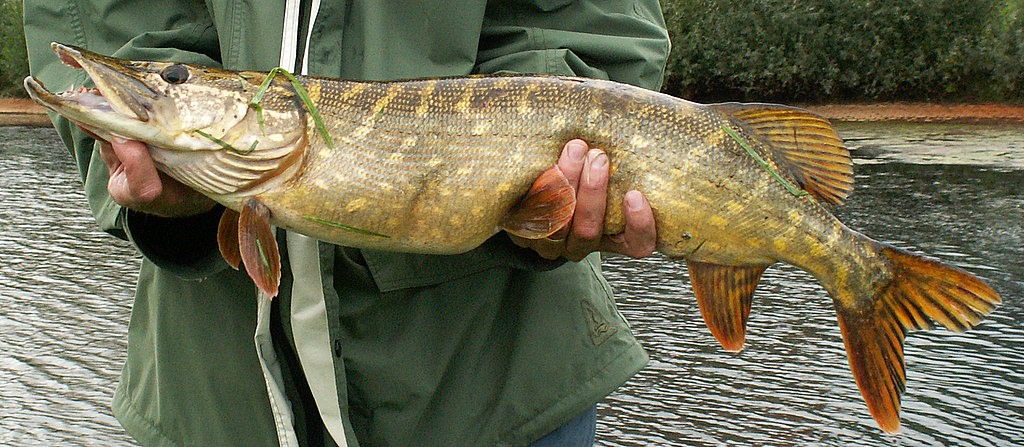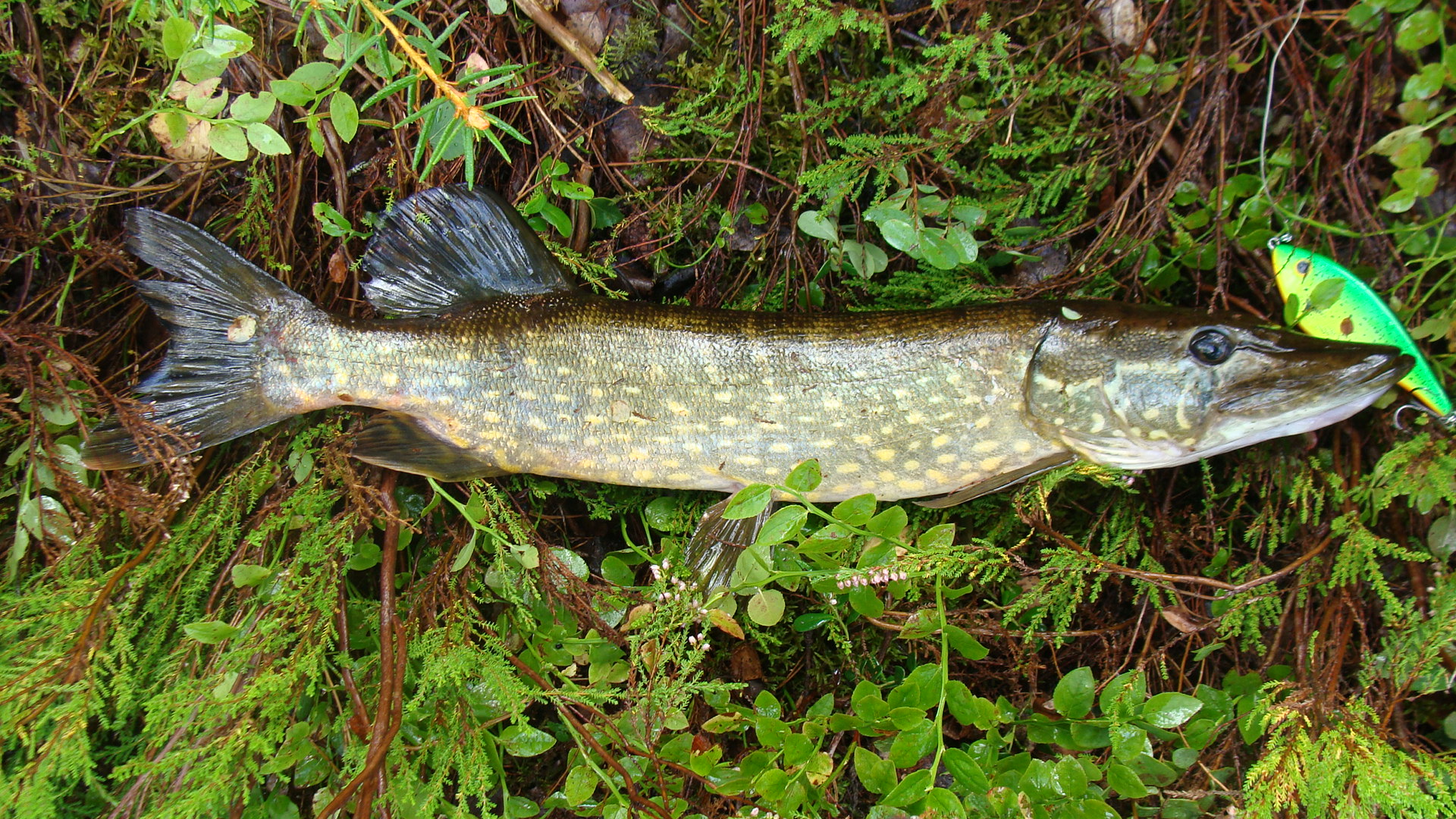Northern Pike

Northern Pike
(Esox lucius )
Tags: Aquatic
Identification and Reproduction
Identification:
- The Northern pike is a large, carnivorous fish.
- It has an elongated body and on average grow between 40-55 cm long. They have been known to grow up to one meter long.
- Snout is narrow and pointed with a series of large teeth in the lower jaw.
- They have a dorsal fin and anal fin that are opposite, near the tail.
- Scales cover their entire cheek.
- They are typically dark shades of green to brown with a light coloured underbelly. They are flecked with light golden green curved lines along the sides.
- Eyes are yellow and very mobile.
Reproduction:
- Northern pike are regarded as random spawning fish. Females will broadcast their eggs randomly over vegetation and be fertlized by the males.
- They spawn in shallow waters when temperatures are between 4-7oC.
- Eggs take two weeks to hatch.
- Fertilized eggs attach to aquatic vegetation.
- Parent pikes are not involved in raising the young.
Habitat & Ecology
- It can be found in freshwaters as well as brackish waters.
- They have been observed in a variety of freshwater bodies, ranging from cold deep lakes, warm shallow ponds and even muddy rivers.
- They are very adaptable and can survive in a wide range of water temperatures, clarity and oxygen levels.
- Northern pike are very territorial and are typically solitary.
- Adult pike will feed on frogs, crayfish, mice, muskrats and young waterfowl.
- Northern pikes can live up 12 years.
Impacts
- They predate on native species and put native cyprinids and salmonids at risk.
- Have known to hybridize with the native fish, muskellunge (Esox masquinongy).
- Known as a nuisance as it feeds on other game fish such as trout, bass and perch.
- Their presence can change the biodiversity of a waterbody.
Management
- Do not move Northern pike from one waterbody to another.
- If you catch a pike do not release it back into the water.
- Please report any sightings of a Northern pike. It is helpful to include pictures, date and location.
Resources
For more information please refer to the Animal Diversity Web datapage on Esox lucius: American pike.
Fisheries and Oceans Canada provides a brief factpage to help identify the Northern Pike as well as several ofther resources.
Header photo (Elendal).




